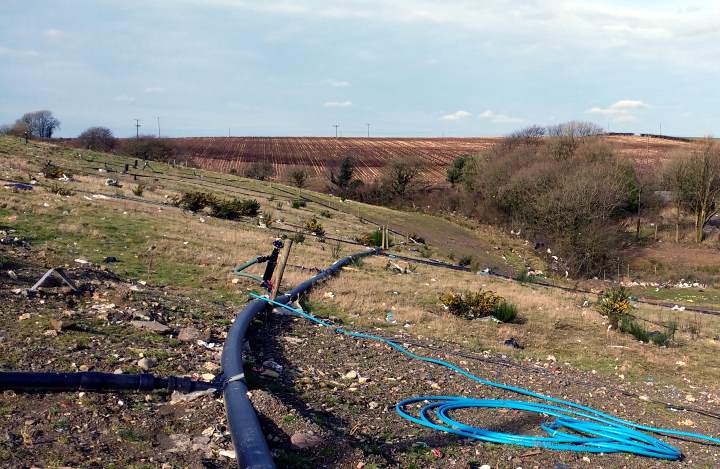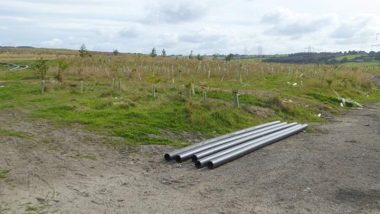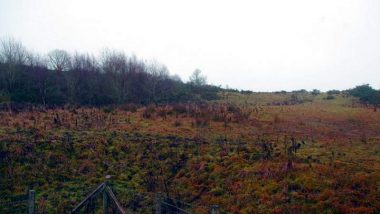IPPTS Associates’ Role in this Leachate Case Study for an active landfill was that of an Active Landfill Leachate Expert
Deep Moor Landfill, Devon, UK: Review of Leachate Generation and Recommendations on Measures to Reduce Leachate Generation Rates
An assessment of leachate ingress sources from above, around, and below a partly capped and restored active landfill in the last few years of its active life.
The study resulted in recommendations for improved measures in the prevention of ingress of leachate and measures to allow the cessation of the collection of some leachate sources that no longer present an environmental hazard.
That was a quick summary. For an in-depth discussion of this leachate case study for an active landfill, read on:
Leachate Case Study for an Active Landfill
In this case study on leachate treatment for an active landfill, you will discover the effective site-specific methods and solutions that IPPTS Associates offered in this case for managing their leachate.
Introduction
Leachate is a significant concern in landfill management due to its potential environmental and health risks. This case study focuses on the treatment of leachate from an active landfill while operating to receive waste, providing valuable insights into effective management strategies.

Case Study Background
The active landfill under study faced unique challenges in leachate management. This section provides a detailed description of the landfill and its specific leachate management issues. The objectives of the case study are also outlined.
Methodology
The case study employed existing site drawings and leachate data gathered by the client and the analysis of this data. IPPTS Associates’ principal also had personal knowledge of the site from previous consultancy work for this client. The work included a site visit to inspect the existing leachate collection and drainage infrastructure.
Findings
The findings from the leachate case study were presented in a detailed report. Insights were provided into the multiple sources of leachate emanating from the site, and the degree to which infiltration may have been occurring from multiple sources, such as the landfill cap and perimeter drains, were discussed.
The report highlighted the most effective options available for managing and minimizing the rate of generation of leachate from active landfill cells, previously capped cells, partially capped areas, and historic landfill phase areas. It went on to suggest that several possible remedial works be priced for their cost-benefit to be assessed when compared with treating the flows without any reduction on current high rates of leachate output.
Solutions and Recommendations
Based on the case study findings, this section provides an overview of the most effective solutions identified for leachate infiltration reduction. Recommendations were offered for implementing these solutions, considering site-specific factors.
Benefits and Impact
Implementing effective leachate generation reduction and minimization methods has numerous benefits and positive impacts for landfill owners and operators.
Action to minimize leachate generation often provides environmental, community, and operational advantages when an expert leachate management consultant recommends solutions emphasizing the importance of sustainable landfill practices.
Conclusion for our Leachate Case Study for an Active Landfill
In conclusion, this leachate case study provides valuable insights into managing leachate from active landfills. The findings and recommendations can guide landfill operators and communities in improving their waste management practices and minimizing environmental risks.
Frequently Asked Questions
1. What is leachate and why is it a concern in landfill management?
Leachate is the liquid that forms when water interacts with waste in a landfill. It contains various pollutants and can pose environmental and health risks if not properly managed.
2. What are the challenges faced in treating leachate from an active landfill?
Active landfills produce large volumes of leachate with varying compositions, making treatment complex. Additionally, the cost and availability of suitable treatment technologies can be challenging.
3. How was the leachate case study conducted?
The case study involved extensive data collection, analysis, and review from an active landfill site, including analysis of results obtained from leachate samples taken by the client’s organization over many years. Various operational records were inspected, as were the leachate collection and extraction system performance data. These were analyzed by the consultant to evaluate the effectiveness of different leachate flow minimisation methods.
4. What were the key findings from the leachate case study?
The case study identified several effective leachate reduction methods, which might be beneficial subject to detailed cost-benefit analysis. It also highlighted the importance of regular monitoring for increases in leachate flow. And, if found, to investigate the source of all leachate flows to take early action to manage the flow to minimize leachate production.
5. Can the solutions identified in the case study be applied to other landfill sites?
Yes, the solutions and recommendations from the case study can be adapted and implemented in other landfill sites. However, site-specific factors should be considered for optimal results.
6. What are the benefits of implementing effective leachate management methods?
Implementing effective leachate management methods can:
- minimize the costs of landfill operation,
- reduce the risk of environmental pollution,
- protect groundwater resources, and
- ensure compliance with regulatory standards.
It also improves the overall sustainability and reputation of landfill operations.
7. How can landfill operators and communities benefit from the findings of this case study?
Landfill operators can reduce operating costs, improve waste management practices, and enhance their environmental performance.
Communities benefit from reduced pollution risks and improved quality of life.




You must be logged in to post a comment.